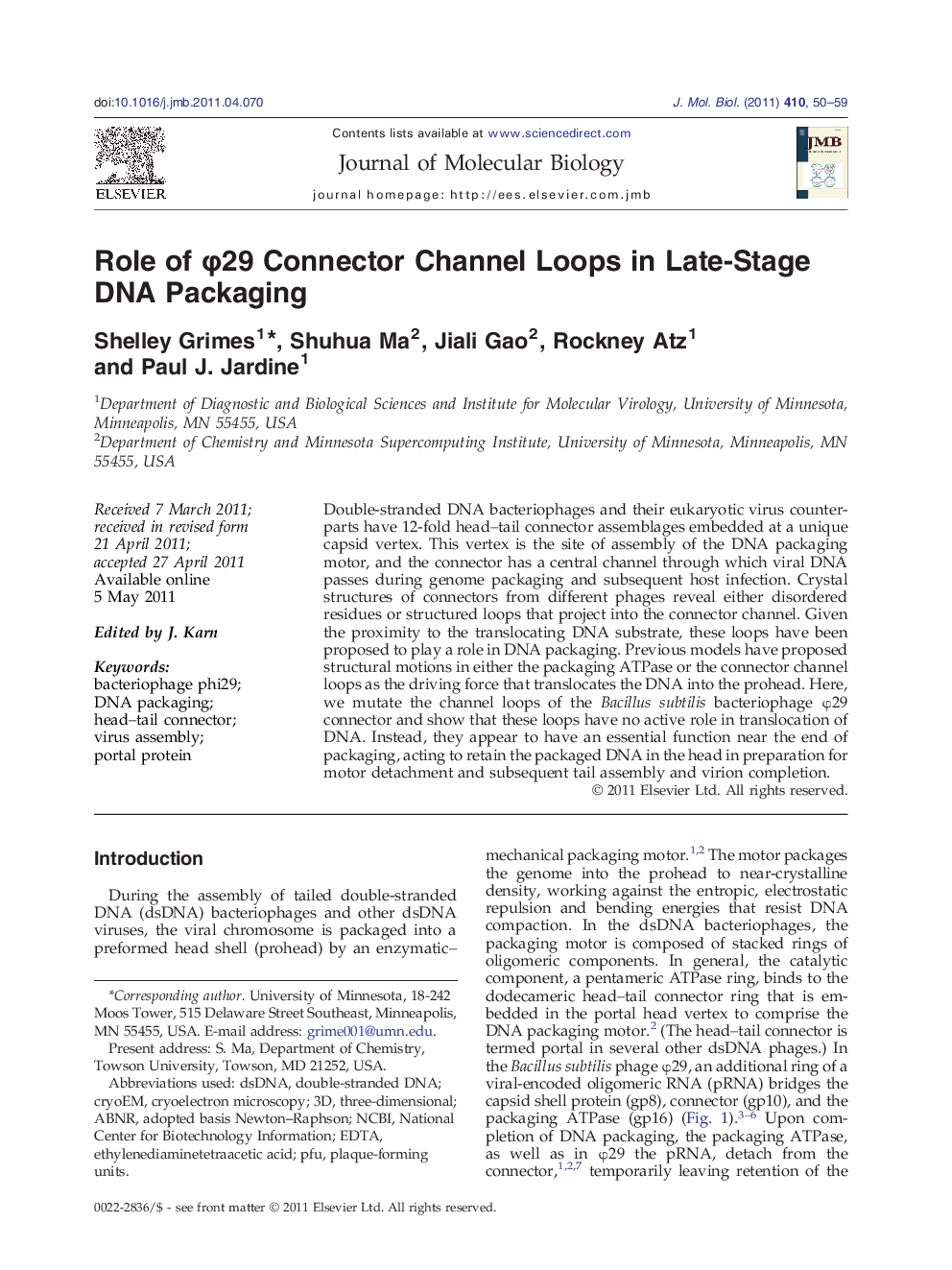| Article ID | Journal | Published Year | Pages | File Type |
|---|---|---|---|---|
| 2185166 | Journal of Molecular Biology | 2011 | 10 Pages |
Double-stranded DNA bacteriophages and their eukaryotic virus counterparts have 12-fold head–tail connector assemblages embedded at a unique capsid vertex. This vertex is the site of assembly of the DNA packaging motor, and the connector has a central channel through which viral DNA passes during genome packaging and subsequent host infection. Crystal structures of connectors from different phages reveal either disordered residues or structured loops that project into the connector channel. Given the proximity to the translocating DNA substrate, these loops have been proposed to play a role in DNA packaging. Previous models have proposed structural motions in either the packaging ATPase or the connector channel loops as the driving force that translocates the DNA into the prohead. Here, we mutate the channel loops of the Bacillus subtilis bacteriophage φ29 connector and show that these loops have no active role in translocation of DNA. Instead, they appear to have an essential function near the end of packaging, acting to retain the packaged DNA in the head in preparation for motor detachment and subsequent tail assembly and virion completion.
